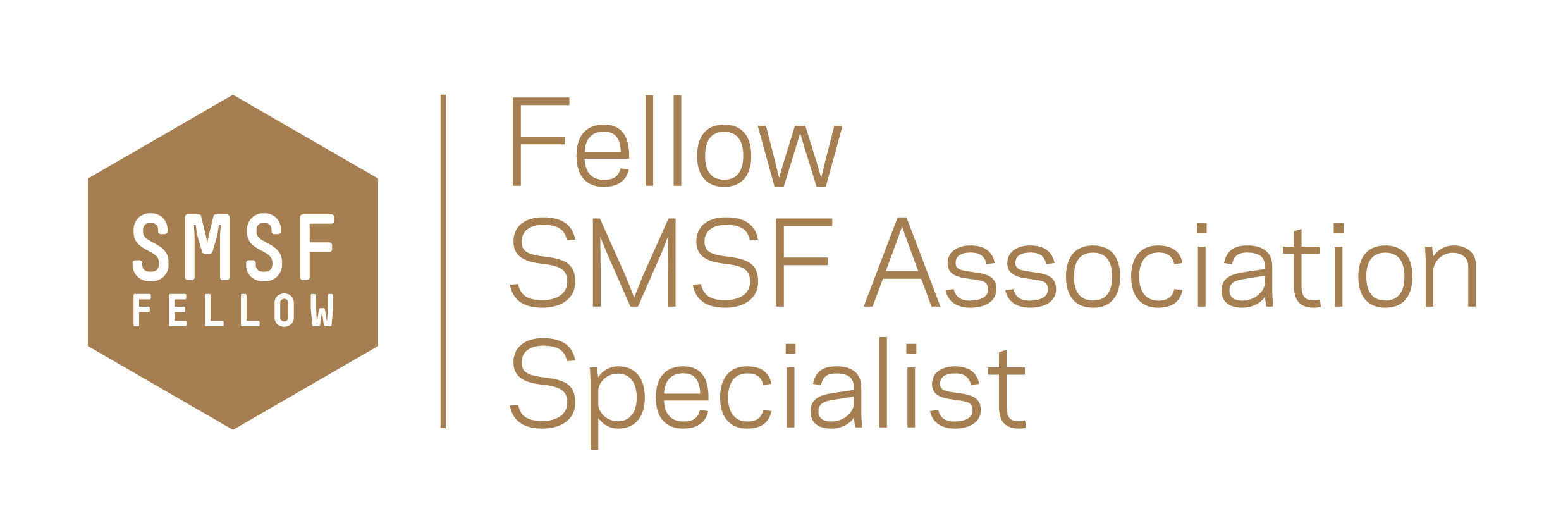We expected this year’s Federal Budget to have a strong emphasis on job growth and improvement of women’s security and ability to get back to work cost effectively. There were pleasant surprises from an SMSF perspective. The key measures that you should be aware of are outlined below with some commentary and tips. I have benefited from the technical input of the SMSF Association, Accurium Technical and conversation with other professionals in preparing this content.
All measures outlined below, other than the proposed changes to legacy retirement products, are expected to commence from 1 July 2022, once they have received Royal Assent.
Repealing the work test for voluntary contributions
Individuals aged 67 to 74 (inclusive) will be able to make non-concessional (including under the bring-forward rule) or salary sacrifice contributions without meeting the work test, subject to existing contribution caps and existing total superannuation balance limits.
TIP: The waiver of the work test will not apply to personal deductible contributions, so individuals aged 67 – 74 wishing to claim a tax deduction for personal contributions will be required to meet the work test (or be eligible to apply the work test exemption).
Individuals aged 65 to 74 will also be able to use the bring forward provisions subject to the available caps and meeting the total super balance criteria. Currently, only those under age 65 on 1 July of a financial year can trigger the bring forward provision in that financial year. The measure that was originally announced in the 2019-20 Federal Budget to extend this age from 65 to 67 effective 1 July 2020 has not been legislated.
The new measures present opportunities for many from 1 July 2022 including:
Opportunity to even up spouse balances and maximise superannuation in pension phase – Couples where one spouse has exhausted their transfer balance cap and has excess amounts in accumulation are able to withdraw and recontribute to the other spouse who has transfer balance cap space available to commence a retirement phase income stream. This can increase the tax efficiency of the couple’s retirement assets as more of their savings are in the tax-free pension phase environment.
Top up retirement savings up to age 74 – Subject to contribution caps, the new rules can help individuals contribute additional funds to super up to age 74, perhaps where they may have received an inheritance or sold an investment property.
Make your tax components more tax free by using recontribution strategies – SMSF members can cash out their existing super and re-contribute (subject to their contribution caps) them back in to the fund to help reduce tax payable from any super death benefits left to non-tax dependants. They can now do this until they turn age 75.
TIP: There is always a cost of making changes so work with your adviser and accountant to time these strategies to minimise additional accounting costs.
Opportunities to make spouse contributions for longer – The new rules can provide you with the opportunity to continue making spouse contributions which can not only help with equalising super between spouses, but may also enable the contributing spouse to benefit from the spouse contribution tax
Reducing the eligibility age for downsizer contributions
The eligibility age to make downsizer contributions into superannuation will be reduced from 65 to 60 years of age. All other eligibility criteria remains unchanged, allowing individuals to make a one-off, post-tax contribution to their superannuation of up to $300,000, per person, from the proceeds of selling their home. These contributions will continue not to count towards non-concessional contribution caps.
The new rules will allow more individuals to contribute more of their sale proceeds to super – under both the $300,000 downsizer limit (or $600,000 for a couple) and the $330,000 bring forward NCC cap each as well. This would allow for up to $630,000 in one year contributions for as single person and $1,260,000 for a couple subject to their contributions caps/
Tip: Great for people who have little super and invested in their business or property to now switch to tax effective pensions.
Relaxing residency requirements for SMSFs
SMSFs and small APRA funds will have relaxed residency requirements through the extension of the central management and control test safe harbour from two to five years. The active member test will also be removed, allowing members who are temporarily absent to continue to contribute to their SMSF. The Government expects this measure will have effect from 1 July 2022.
TIP: Probably going to be useful post-covid for those working or traveling extended periods overseas and levels the playing field somewhat with APRA funds.
No change to legislated Super Guarantee increase
The Government will not change the legislated increase in the Super Guarantee (SG) in this year’s Budget. SG will increase to 10% from 1 July 2021 and then gradually increase to 12% as follows:
Table 21: Super guarantee percentage
| Period | General super guarantee (%) |
| 1 July 2020 – 30 June 2021 | 9.50 |
| 1 July 2021 – 30 June 2022 | 10.00 |
| 1 July 2022 – 30 June 2023 | 10.50 |
| 1 July 2023 – 30 June 2024 | 11.00 |
| 1 July 2024 – 30 June 2025 | 11.50 |
| 1 July 2025 – 30 June 2026 | 12.00 |
| 1 July 2026 – 30 June 2027 | 12.00 |
| 1 July 2027 – 30 June 2028 and onwards | 12.00 |
Legacy retirement product conversions
Individuals will be able to exit a specified range of legacy retirement products, together with any associated reserves over a two-year period. The specified range of legacy retirement products includes market-linked, life expectancy and lifetime products, but not flexi-pension products or a lifetime product in a large APRA-regulated or public sector defined benefit scheme.
Currently, these products can only be converted into another like product and limits apply to the allocation of any associated reserves without counting towards an individual’s contribution cap.
Some detail provided in respect to the features of this proposed measure include:
- If a client chooses to commute their legacy pension, the social security and taxation treatment from the legacy product will not be grandfathered. Age Pension clients who currently benefit from a 100% or 50% asset-test exemption on their legacy pension may benefit from continuing their income stream.
- Exiting a product will not cause re-assessment of prior social security treatment of the product, for example the deprivation rules.
- Any commuted reserves will be taxed as an assessable contribution of the fund (with a 15% tax rate) but will not count towards the individual’s concessional contribution cap.
- The existing transfer balance cap valuations for any commencement or commutation continue to apply.
- Once the commuted amount is in accumulation phase the member can decide what to do with that balance such as take a lump sum, retain in accumulation, or commence a pension (subject to the individual’s transfer balance cap).
- The measure will not apply to flexi-pension products or a lifetime product in a large APRA-regulated or public sector defined benefit scheme.
This measure will take effect from the first financial year after the date of Royal Assent of the enabling legislation.
TRAP: Please seek advice before using this strategy as you do not want to lose Age Pension benefits in this low interest rate environment.
Super and Property for your children or low income partner
Removing the $450 per month threshold for superannuation guarantee eligibility
The Government will remove the current $450 per month minimum income threshold, under which employees do not have to be paid the superannuation guarantee by their employer.
Great move and will help people get more benefit from super. If you can combine this with a personal contribution yourself or for a low income spouse of $20 per week ($1,000 per annum) then the member may benefit from the Government Co-Contribution of up to $500 per year.
First Home Super Saver Scheme (FHSSS)— increasing the maximum releasable amount to $50,000
The Government will increase the maximum releasable amount of voluntary concessional and non-concessional contributions under the FHSSS from $30,000 to $50,000.
Voluntary contributions made from 1 July 2017 up to the existing limit of $15,000 per year will count towards the total amount able to be released. Subject to passage of legislation, it is expected that this measure will be effective from 1 July 2022.
The Government will further make four technical changes to the legislation underpinning the FHSSS to improve its operation as well as the experience of first home buyers using the scheme.
Tip. This is a great way to show your children the benefit of salary sacrifice and get them used to putting savings away.
Social security (Benefits for you or you mum and/or dad
Improving the Pension Loan Scheme
Current
The Pension Loan Scheme (PLS) allows a fortnightly loan of up to 150% of the maximum rate of Age Pension to help boost a person’s retirement income by unlocking capital in their real estate assets. It can be available for self-funded retirees who are Age Pension age but do not receive a social security pension. Interest is compounded fortnightly at 4.50% p.a., and any debt under the scheme is paid back when the property is sold or the person dies.
Proposal
From 1 July 2022, the Government will introduce a No Negative Equity Guarantee for PLS loans and allow people access to a capped advance lump sum payment.
► No negative equity guarantee
Borrowers under the PLS, or their estate, will not owe more than the market value of their property, in the rare circumstances where their accrued PLS debt exceeds their property value. This brings the PLS in line with private sector reverse mortgages.
► Immediate access to lump sums under the PLS
Eligible people will be able to access up to two lump sum advances in any 12-month period, up to a total value of 50% of the maximum annual rate of Age Pension (currently $12,385 for singles and $18,670 for couples).
TAXATION
Low and Middle Income Tax Offset extended another year until 2021-22
The Government announced that it will retain the Low and Middle Income Tax Offset (LMITO) in the 2021-22 financial year. Eligibility for the LMITO:
| Low and middle income tax offset | |
| Taxable income | Offset |
| $37,000 or less | $255 |
| Between $37,001 and $48,000 | $255 plus 7.5 cents for every dollar above $37,000, up to a maximum of $1,080 |
| Between $48,001 and $90,000 | $1,080 |
| Between $90,001 and $126,000 | $1,080 minus 3 cents for every dollar of the amount above $90,000 |
Increasing the Medicare levy low-income thresholds
The income thresholds at which Medicare levy is payable for singles, families and pensioners will be increased for the 2020-21 financial year as follows:
- Singles will be increased from $22,801 to $23,226.
- The family threshold will be increased from $38,474 to $39,167.
- For single seniors and pensioners, the threshold will be increased from $36,056 to $36,705. The family threshold for seniors and pensioners will be increased from $50,191 to $51,094.
For each dependent child or student, the family income thresholds increase by a further $3,597 instead of the previous amount of $3,533.
Reminder of other changes applying from 1 July 2021.
CHANGING SUPERANNUATION THRESHOLDS FROM 1 JULY 2021 TO 30 JUNE 2022
| Transfer Balance Cap | $1.7 million but many who have used some of their cap already will have an individual limit betwen $1.6m and $1.7m |
| Concessional Contribution Cap | $27,500 |
| Non-concessional Contribution Cap | $110,000 or $330,000 over 3 years using the bring forward rule |
| Low rate cap for Lump sum withdrawals | $225,000 |
| Untaxed Plan cap | $1,615,000 |
| Account based pension payments | Return to default payment levels (was reduced by 50% for 2020 and 2021 |
| Superannuation Guarantee | 10% |
| Maximum Super Contribution Base | $58,920 (per quarter) |
| Government Co-contribution ($500) | Lower income threshold – $41,112 Upper income threshold – $56,112 |
Looking for an adviser that will keep you up to date and provide guidance and tips like in this blog? Then why now contact me at our Castle Hill or Windsor office in Northwest Sydney to arrange a one on one consultation. Just click the Schedule Now button up on the left to find the appointment options.
Please consider passing on this article to family or friends or your tax agent! Pay it forward!
Liam Shorte B.Bus SSA™ AFP
Financial Planner & SMSF Specialist Advisor™



Tel: 02 98941844, Mobile: 0413 936 299
PO Box 6002, NORWEST NSW 2153
40/8 Victoria Ave. Castle Hill NSW 2154
Corporate Authorised Representative of Viridian Select Pty Ltd ABN 41 621 447 345, AFSL 51572
This information has been prepared without taking account of your objectives, financial situation or needs. Because of this you should, before acting on this information, consider its appropriateness, having regard to your objectives, financial situation and needs. This website provides an overview or summary only and it should not be considered a comprehensive statement on any matter or relied upon as such.














